Shimano XT 12-Speed Cranksets
(discontinued)
| Where To Buy | |||
|---|---|---|---|
Free shipping on orders over $50 (continental U.S. only).
International shipping available. Some exclusions apply. |
Free shipping on orders over $50 (continental U.S. only).
International shipping available. Some exclusions apply. $46.99
|
||
Free shipping on orders over $50 (continental U.S. only).
International shipping available. Some exclusions apply. |
Free shipping on orders over $50 (continental U.S. only).
International shipping available. Some exclusions apply. $164.99
|
||
Shimano XT FC-M8100 2x Crankset
$232.99
|
|||
1 member reviews

+Super light
+Reasonable price for what it is
+Simple to install
+Nice elegant design
+Creak-free chainring interface
-Left crank arm splines show some wear (but never loosened)
-Feels like the arms could be stiffer (what!?)
So you've read every review of the new 12-speed Shimano groups and like me, XTR is too much for you. You're left with 3 options : XT, SLX or (recently) Deore... depending of what's left in stock during the pandemic. You need 165mm cranks ? Then XT or SLX are the only choices left for you. Still undecided between those two ? Read on.
I can't explain why, but I've always been a fan of the SLX group. Maybe it's because of SLX components' excellent price/durability/performance ratio, or the often nicer looks over XT (in my opinion, in the past years). Once again, while choosing my new crankset, I was torn between the SLX and XT models. Weight-wise, both were technically within 10 grams of each other in the 165mm size (my arms+spindle+washers weights 538g). Both had 165mm arms without too much material hanging past the threaded pedal hole (often found on Race Face cranks). The SLX FC-M7120 checked every box, but I could not get over the bluish anodizing that wouldn't have matched my new bike. It was around 50$ usd more for the XT simply for looks, but I can't always be rational.

The XT FC-M8120 crankset for boost frames has a 55mm chainline, 178mm q-factor and uses the same 24mm steel spindle as the other Shimano cranksets. This is good news for people for have a press-fit bottom bracket, as the 24mm spindle lets you use a bottom bracket with bigger bearings than a 30mm spindle crank. That means more durability, more stiffness, and often, a stronger BB because of the added structural material in the cups. That might be reaching a bit too far, but I'll take all the chances I can to have a creak-free bottom bracket interface. The 165mm crank arms and spindle with washers and preload adjustment cap weights 538g so this is a pretty lightweight aluminium crankset.
As with most (if not all) Shimano cranks, the 2-bolt and threaded cap makes installing the cranks a breeze. Just grease the spindle, slide it through the BB, grease the splines, slide the crank on, push the plastic spacer in the crank slot, tighten the threaded plastic cap until there is no play and tighten both crank bolts. So easy. The removal can also be done without a crank puller so this makes maintenance a breeze.
New chainring interface
The arrival of Shimano's 12 speed groups came with a new direct-mount chainring "standard" that's only used on their cranks. Shimano offers reasonably-priced Deore or SLX rings in 30 and 32 tooth options as well as 28 to 34 tooth versions of XT and XTR rings. Many companies now produce round and oval chainrings for the Shimano direct-mount standard like Wolf Tooth, One Up, NSB, Blackspire and others.

To install the direct-mount chainring, Shimano includes the necessary FC-TL41 tool in the box, but people who got their cranks on a complete bike might need to buy the 15$ish tool or ask a friend to borrow one. Oh, and a 32mm open-end wrench to tighten it to 35-50 Nm.
I went with my preferred 30t chainring size, but settled for the SLX CRM75 option. The XT rings were almost twice the price for a few less grams and an all-black finish. They share the same aluminium spider and steel teeth so I don't know why they couldn't produce a single chainring line shared between Deore/SLX/XT and save some money and sku numbers. Like Race Face, who have only one or two "quality" steps.
Something that I found weird is the chainline spacing on Shimano's new lines : 52mm for standard, 55mm for boost, and 56,5mm for super boost. In my mind, 52-53mm would be better for chain alignment on the lowest gears, but I've read somewhere that if they went for a narrower chainline with 12 speed, the chain would end up rubbing on the smallest sprockets. My 11 speed XT setup last year used a 52mm chainline made possible by my old faithful Race Face Chester crankset, and the shifting was great with no rubbing. Maybe things are different with 12 speed. Anyway, I didn't have any problems with this chainline and the cassette/chain durability seemed on par with my previous drivetrain setups.

The ride feel and flex vs. weight
With the many moving parts of a bike, it can be hard to pinpoint which part is stiff and which one is flexy when hammering on the pedals. Is it the frame, the cranks, the wheels? I can say that my wheels are properly tensioned and that my frame (Meta AM 29) is stiff, but I'm not so sure about those XT cranks. I've never felt them flex or be annoyed by an unusual deflection, so I guess that's good, but at the same time, they didn't feel as stiff as say my Race Face Chester cranks. Both using a steel 24mm spindle and a 30mm chainring. At 538g for the arms and spindle, the hollow-forged XT FC-M8120 is 217 grams lighter than the Chester, which weights 755g for the same parts and is made of forged 6066 aluminium. That might explain why it does not feel as sturdy, or it might just be because of the shape of the arms. It might also be just a feeling because of the visually more fragile appearance. Nevertheless, like I said, the XT did its job without feeling too flimsy, but if I was riding bike park laps all day I'd go for a Saint setup or something from Race Face of similar weight and price like the Aeffect R.
Durability
Since we can only ride 6-7 months of the year because of our snowy winters, I can't seem to log much more than 500-600km per season. After one season, the crank doesn't have any scratches, but I have covered it with a protective film. The crank arms come with a well-placed film to help with shoe rub, but from the reviews I've seen it was easy to scratch and gets removed by the shoes rubbing.
While I have installed many Shimano splined cranks in my life, they were never on my bike and this is the first spline-interfaced Shimano crankset I've bought. Being extremely meticulous with installation and maintenance, I am 100% confident that my arms were properly tightened to Shimano's specs (which are written on a sticker besides the bolts). I take note of my torque wrench settings, and I have checked the crank bolts after every ride. Everything stayed tight but there is some wear visible on the crank arm splines like if I was pedaling too hard (which probably isn't the case haha). I'll keep a close look on this next season, but it surprised me quite a bit when I removed the cranks after the season. Since nothing ever moved, I was expecting perfect spline condition but use happens.

Conclusion
Maybe it is the effect of the relatively "delicate" look of the cranks, the lighter weight than what I'm used to, or the wear on the left arm's splines, but it is the first time that I am let down by an XT-level component. I was expecting awesome durability and best-in-class stiffness, but against all odds, this time I can't agree with all the reviews I've read of the XT groupset. Shimano says "Rigid and lightweight design for agressive trail riding" and in my mind this is exactly the type of riding that I do, but it seems like I would be better served with an even stiffer crank design. I'd be curious to ask enduro racers their thoughts as that's what most of the Shimano-sponsored athletes are using. If I wouldn't be annoyed by the bluish tint of the SLX crankset, I'd recommend those over the XT as they're 2/3 of the price for most probably the same performance and durability.
Specifications
XT M8100: 52mm chainline | 172mm Q-Factor
XT M8120: 55mm chainline | 178mm Q-Factor
XT M8130: 56.5mm chainline | 181mm Q-Factor
HOLLOWTECH II
1x12 compatibility
| Where To Buy | |||
|---|---|---|---|
Free shipping on orders over $50 (continental U.S. only).
International shipping available. Some exclusions apply. |
Free shipping on orders over $50 (continental U.S. only).
International shipping available. Some exclusions apply. $46.99
|
||
Free shipping on orders over $50 (continental U.S. only).
International shipping available. Some exclusions apply. |
Free shipping on orders over $50 (continental U.S. only).
International shipping available. Some exclusions apply. $164.99
|
||
Shimano XT FC-M8100 2x Crankset
$232.99
|
|||





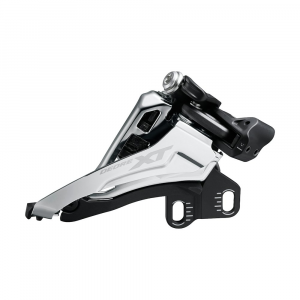
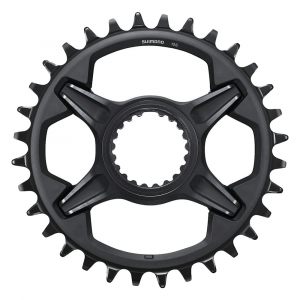
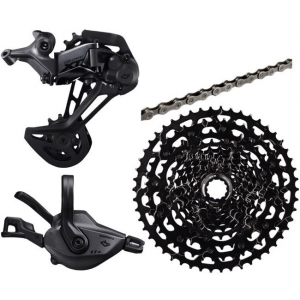

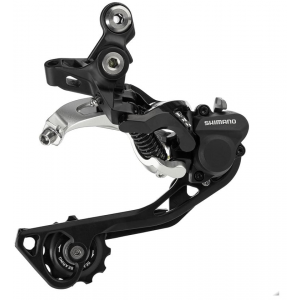
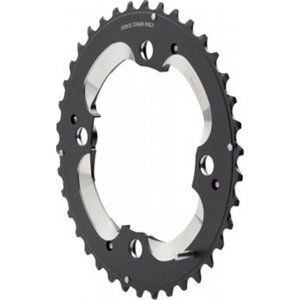
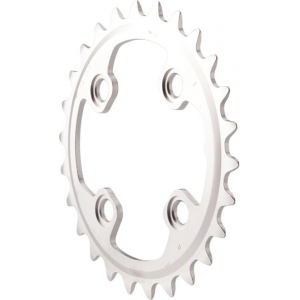
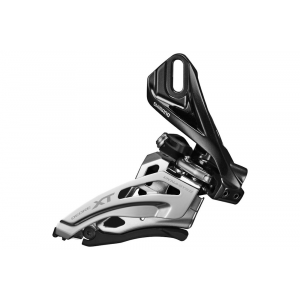
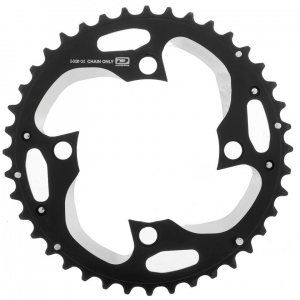
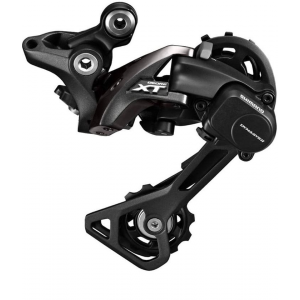
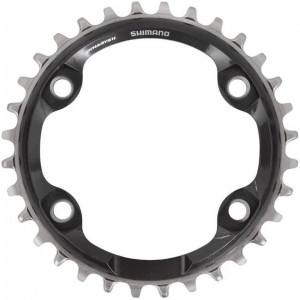








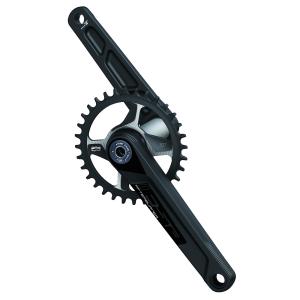




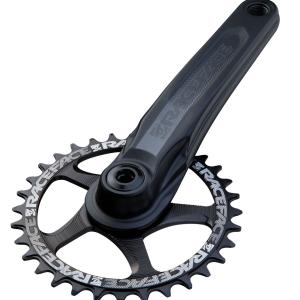











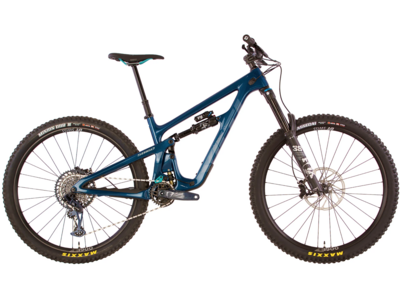
0 comments
Post a reply to: Lightweight crankset for trail bikes